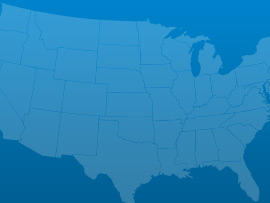Nevada’s 17 counties each maintain their own school district. The two largest districts are Clark County and Washoe County, and a recent inventory of each of these two districts has revealed that approximately 45% of these schools are over 30 years old. A similar situation lies within rural Nevada, and in some counties, there are schools in operation with campuses over 100 years old.
Studies have shown that for every dollar held back from operations and maintenance budgets, the increase in emergency repair budget escalates by 400%. In Clark County, the 2016 Future Capital Program is expected to be budgeted at $3.9 billion. However, a recent study has shown that unfunded needs are in excess of $6.5 billion with over $4.6 billion expected to be needed for modernization of existing facilities. In recent years, Clark County School District has twice gone to the voters for tax increases for school funding and have been voted down both times.
In Washoe County, there is a $511 million shortfall in their capital improvement program. A recent Assembly Bill, AB 46, passed by the Legislature in late 2013 and expected to generate $20 million annually, failed to garner support from the Washoe County Commission and has been sidelined indefinitely.
Another factor affecting Nevada in the long term is having modern facilities that can prepare students for high-tech jobs of the future. Recently business research found that Nevada currently lacks candidates for positions in software and hardware development. Modernizing our school facilities is another opportunity to improve the future job potential of the state.
School boards should assess their education facilities and present options for revenue to ensure Nevada’s schools are fit for our children. Develop a strategic and comprehensive initiative to improve Nevada school facilities at all levels to compete globally in high-tech markets.
 Aviation
Aviation Dams
Dams Drinking Water
Drinking Water Flood Control
Flood Control Schools
Schools Solid Waste
Solid Waste Transportation
Transportation Wastewater
WastewaterA: Exceptional, B: Good, C: Mediocre, D: Poor, F: Failing, ?: Incomplete
Each category was evaluated on the basis of capacity, condition, funding, future need, operation and maintenance, public safety, resilience, and innovation
Aviation
30 public-use airports
Bridges
36 of the 1,853 bridges are structurally deficient
Bridges
$10.70 million in bridge funds came from the Federal Highway Bridge Fund in 2011
Dams
85% of the state regulated dams have an Emergency Action Plan
Dams
150 high hazard dams
Drinking Water
$5.6 billion in drinking water infrastructure needs over the next 20 years
Energy
4.444 gigawatt-hours of renewable energy every year, ranking it 23rd
Hazardous Waste
1 sites on the National Priorities List
Levees
103 miles of levees
Public Parks
$18.8 million of unmet needs for its parks system
Rail
2 freight railroads covering 1,192 miles across the state, ranking 39th nationally by mileage
Roads
4,085 of the state’s 38,567 public roads are major roads, and 2% are in poor condition
Roads
$417.0 million a year in costs to motorists from driving on roads in need of repair, which is $242 /yr per motorist
Schools
$2.5 billion in estimated school infrastructure funding needs
Transit
65.1 million annual unlinked passenger trips via transit systems including bus, transit, and commuter trains
Wastewater
$2.9 billion in wastewater infrastructure needs over the next 20 years

March 03, 2017
As the President’s repeated in his address to Congress his pledge to dramatically increase infrastructure spending to the tune of $1 trillion, various Congressional Committees

March 01, 2017
On Tuesday night, President Trump addressed a joint-session of Congress for the first time in his presidency. Infrastructure was among the many issues he discussed.

February 28, 2017
U.S. motorists set a new record for vehicle miles travelled (VMT) in 2016, driving over 3.2 trillion miles, an increase of 70 billion miles from

February 17, 2017
Romantic dates, the Grammy awards and celebrating black history are not the only milestones of this week; the Oroville dam crisis in California and the